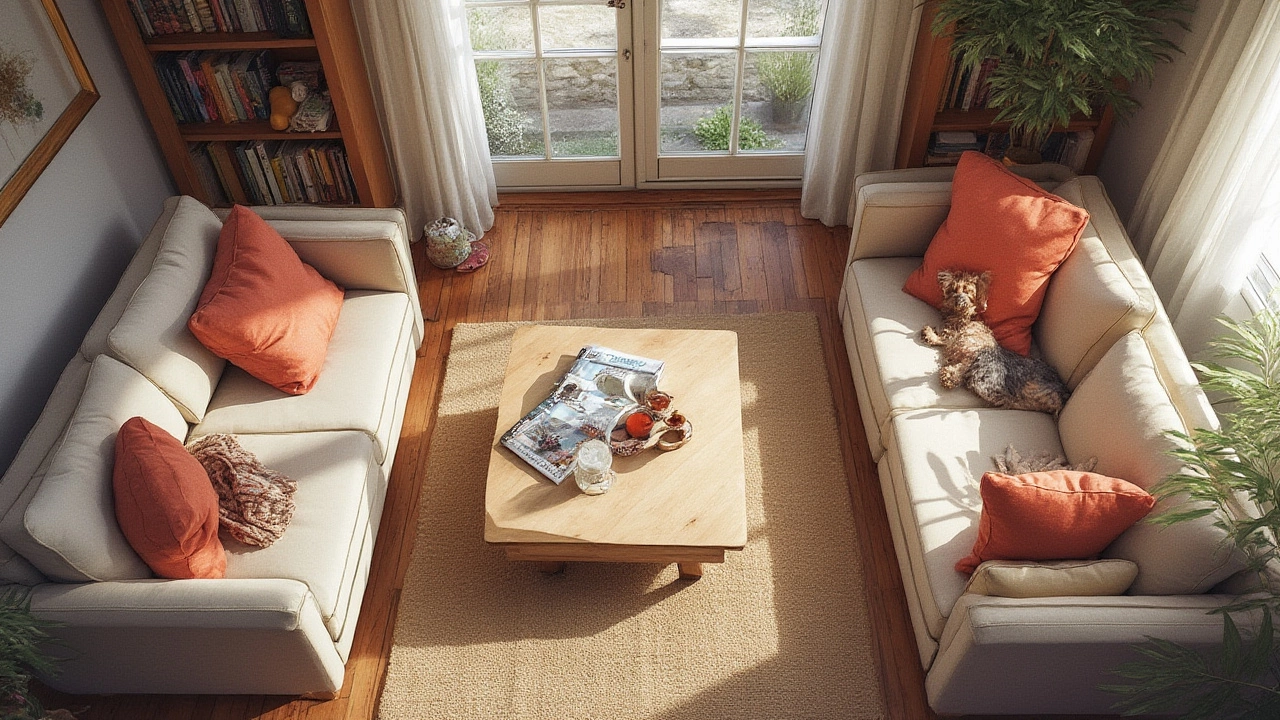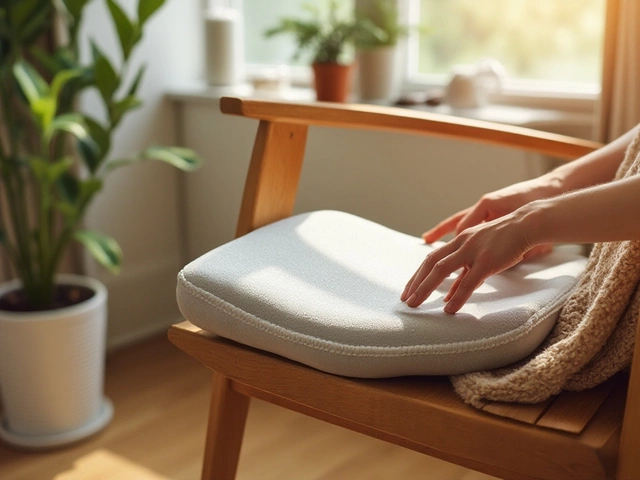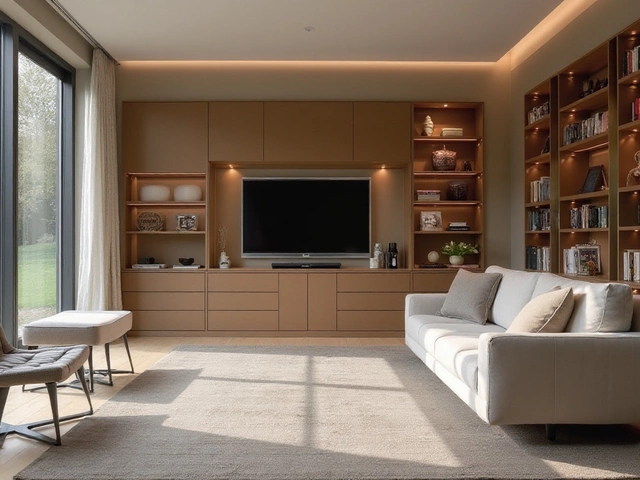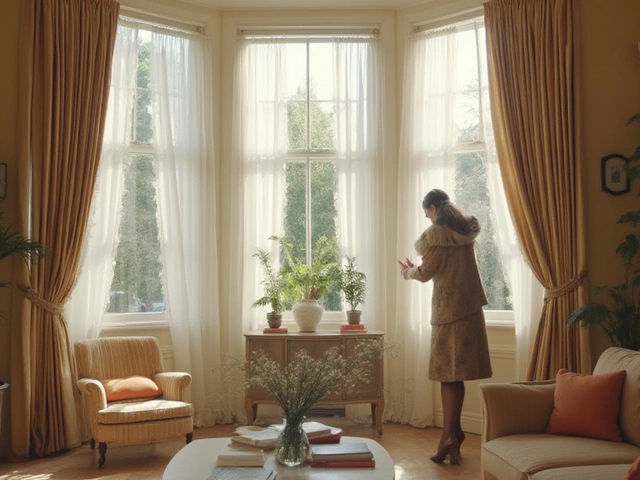Couch vs Sectional: Which is Right for Your Living Room?

Picture this: it’s a rainy weekend, snacks within reach, a friend’s movie night at your place. Some are stretched out, others are curled up. But do they look comfier spread across a plush sectional or perched on a classic couch? The answer isn’t as simple as picking the biggest seat at the store. There’s history, practicality, and—let’s be real—a bit of style anxiety involved in the decision. You wouldn’t believe how hotly debated this simple question can get, even among close friends. The thing is, the right choice has less to do with design rules and more about your daily life, habits, and how you see yourself using your living room. Some people think a sectional is a suburban fairytale, others say couches always win for city apartments. But what’s actually true?
Breaking Down Couches and Sectionals: What Sets Them Apart?
First, let’s get our terms straight so you don’t get lost on a big-box showroom floor. When someone says couch or sofa, they usually mean a straight, two- or three-seater—sometimes a bit formal, sometimes relaxed, but always the long, bench-style seat you picture in classic living rooms. Pick one up in any color or fabric, throw on a couple of bright pillows, and you’ve got a basic design staple that’s lasted decades (the first patent for a ‘sofa bed’ goes all the way back to 1899!).
A sectional, on the other hand, is basically a build-your-own-adventure. It’s made from several joined pieces, so you can shape it as an “L”, a “U”, or sometimes just a big blocky sprawl. They exploded in popularity in the 1950s (thanks, mid-century open plans), but they’re actually rooted in 19th-century European salons, where modular seating made it easy to rearrange rooms for bigger gatherings. Today, sectionals can be anything from tight urban L-shapes to sprawling family-room monsters, with configurations that get as wild as your imagination (attached chaises, console tables, even built-in charging ports if you’re a tech lover).
The big question usually boils down to: comfort or flexibility? Couches tend to feel more tailored—sleek, simple lines, and a structure that fits most apartments or small houses. They work well if you like rearranging furniture for cleaning or you expect to move homes, because, honestly, sectionals can be beasts to move. Sectionals, however, absolutely crush the game in terms of pure lounging space. You can fit more people, sprawl for days, and sometimes even sneak in a nap without bumping feet.
Style-wise, couches score big with modern, minimalist lovers, or anyone with small rooms. Sectionals shout “family zone!” and fill big open floorplans like nothing else. And don’t overlook the fact that modular sectionals can outlast décor trends—they let you swap in and out pieces, so you don’t end up buying a whole new sofa just to keep things fresh. Some people love the anchored, cozy vibe that sectionals create—a literal hug for your living room. But others find them visually heavy, especially in small spaces. If you value open sight lines and want the room to feel airier, couches often win for their low-profile flexibility.
Want the numbers? A typical three-seater couch runs about 84 inches long, compared to the average L-shaped sectional at 95-120 inches a side. That’s a big difference if you’re squeezed for space in a city apartment. Here’s a quick table with the basic measurements that matter:
| Type | Average Length | Seating Capacity |
|---|---|---|
| Couch (3-seater) | 84 inches | 3 |
| L-Sectional | 95-120 inches (per side) | 5-6 |
| U-Sectional | 90-140 inches (per side) | 6-8 |
If you host big holiday shindigs or your family comes by often, sectionals are a dream. If your life is more ‘cozy dinners and reading,’ a neat couch with a single armchair keeps things simple and stylish. There’s also a fun historic tidbit: before TV became mainstream in American homes, most living room seating faced each other for conversation. As screens took over, sectionals swooped in with their L- or U-shapes, angling everyone’s attention the same direction—and, let’s be honest, they’ve stuck around because who doesn’t love family movie night sprawled out?

How Lifestyle and Space Shape Your Best Choice
You walk into a showroom and fall in love with the first huge, velvet sectional you see. It practically begs for game nights and sleepovers. But will it even fit through your front door? Measuring isn’t anyone’s favorite chore, but it’s a must. A 2024 survey from the Furniture Today market report showed almost 63% of returns on big sofas and sectionals come down to mismeasured doors, tight stairwells, or rooms looking overstuffed in real life. So before you start browsing, break out the tape measure and check your entry, elevator, and the room itself. Sectionals are great if you have at least one long, unobstructed wall or an open floor plan. They shine in family rooms or open-concept homes, especially when you want to zone off a ‘lounge’ area in a big shared space. But if your living room is more of a small rectangle—or has lots of doorways, fireplaces, or weird architectural nooks—a couch gets you style without cramming things in.
Your household habits matter too. Got kids who use the living room as a playroom? Sectionals mean fewer ‘crack traps’ for toys, remotes, and snacks (those places where everything vanishes forever if you’re not careful). Dog owners might prefer couches, though, because they’re easier to scooch away from windows where a big muddy pet likes to flop. Hosting style is huge: sectionals make it easy for everyone to get comfy, see the TV (or each other), and don’t leave anyone stranded in a side chair. But if you like to switch things around for parties, couches plus a couple of accent chairs let you mix and match the room, instead of locking you into one layout for years.
Don’t underestimate personal style. Couches come in a thousand silhouettes, with design trends ranging from ultra-modern to retro chic. Want slim arms? Clean lines? Go couch. Love plush, chunky, and inviting? Sectional time. Today’s sectionals come in every fabric and color too, and you can choose between attached or detached cushions, which matters when you’re dealing with chronic spillers or lazy Sunday naps. Leather sectionals feel luxe and easy to wipe down but can get hot if you’re a napper. Washable fabric slipcovers for couches are a real lifesaver if you like to refresh the look every spring.
- If you live alone or with a partner, couches often feel cozier and less overwhelming in small apartments.
- Families and social butterflies usually get more value out of sectionals for group lounging.
- Want to keep future options open? Modular sectionals that separate into smaller sofas or chairs mean you can change things up later—no need to start from scratch.
- If your home is prone to “redecoration impulses,” couches with a couple of poufs or ottomans mean easy, affordable updates without major moves.
One piece of advice: if you’re drawn to sectionals but worried about moving or space, look for ‘reversible’ chaises and modular configurations. These split apart for transport, and you get the best of both worlds when you want to flip your layout.

Long-Term Value, Maintenance, and Real-Life Tips
If budget is a big factor for you, know this—sectionals are usually pricier upfront. Think $1,500 on the low end at big retailers for a decent quality L-shape, while a good three-seater couch tends to start closer to $700-$900. But price isn’t the whole picture. Sectionals often last longer because, when something inevitably gets trashed (spaghetti stains, I’m looking at you), you can swap out just the damaged part of a modular sectional. Couches are simpler to deep clean and reupholster, which can stretch their lifespan by another five years or more. According to HomeAdvisor’s 2024 upholstery cost report, reupholstering a standard sofa runs $600-$1,200—less than a new quality sectional, but the math only works if the frame is solid.
Future-proofing is another pro-level move. Sectionals sometimes take a big hit in resale value, especially custom shapes that work only in one corner. A neutral, simple couch has better resale odds because it fits more homes. If you rent, or think you’ll move in the next three years, choosing something flexible and easy to break down pays off in stress saved on moving day. Don’t forget the cleaning angle: cleaning a sectional takes more time because there are more crevices and corners, but some recent models come with zip-off and machine-washable covers. Couches are easier to manage day-to-day and can fit through almost any door.
And here’s a sleeper tip most people miss: if guests sleep over often but you don’t have a spare room, consider a sleeper sectional or couch that folds out. Sectional sleepers are roomier but bulkier. Sofa beds still hold their own in small spaces. A recent survey by Sleep Foundation found that 40% of people who host overnight guests “would rather have a comfortable sleeper sofa than buy a cheap guest bed,” so you’re in good company if your living room pulls double duty.
Check the warranty before you swipe your card—several popular mid-price brands offer 5 to 10 years on frames for both couches and sectionals. If you’ve got pets or little ones, stain-resistant fabric is your best friend. And when arranging, always leave at least 24 inches of walking space in and out of any room—living space flow makes or breaks how cozy the vibe feels, whether you pick a couch or sectional.
- Quick tip: Use painter’s tape to outline the size of your dream sectional or couch on your living room floor. That instant visual check saves headaches later.
- When you finally pick your seat, invest in a couple of throw blankets and cushions. They’re not just for looks—layered, textured fabrics help a big sectional feel homey, or let you instantly dress up a simple couch for guests.
- Mixing and matching isn’t off-limits. Some of the most Instagram-worthy rooms right now use a simple couch and an oversized ottoman or accent chair instead of a massive sectional, so you aren’t boxed in by tradition.
- Need storage? Some sectionals come with built-in compartments under chase lounges—ideal for hiding toys, games, or extra bedding if you’re short on closet space.
Don’t let trends or sales pressure make up your mind. The couch vs sectional debate is honestly a fun excuse to dream about how you want to live at home. Ask yourself: Where do I see friends gathering, family unwinding, or a long work-from-home afternoon turning into a Netflix binge? That answer’s usually a better guide than any design magazine.
Still, if you twist my arm for a verdict: If you have the space and love hosting, sectionals are worth every penny. Cozier spaces, old-school apartments, or restless rearrangers? Couches win for ease, style, and getting out the door when it’s time for your next chapter. So grab the tape measure, ignore the trends, and choose the piece that makes your space feel like home—the rest will fall into place.





